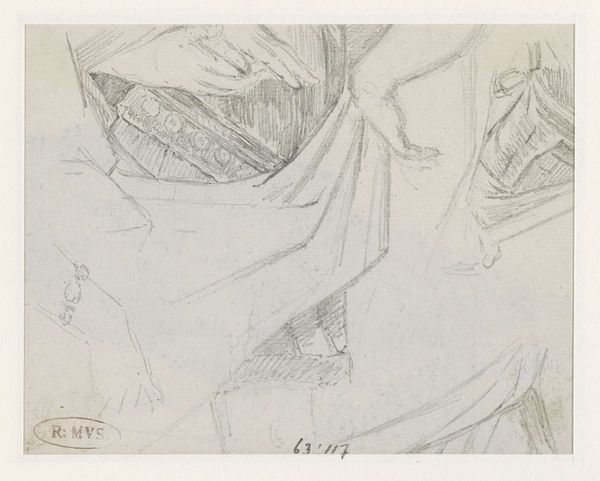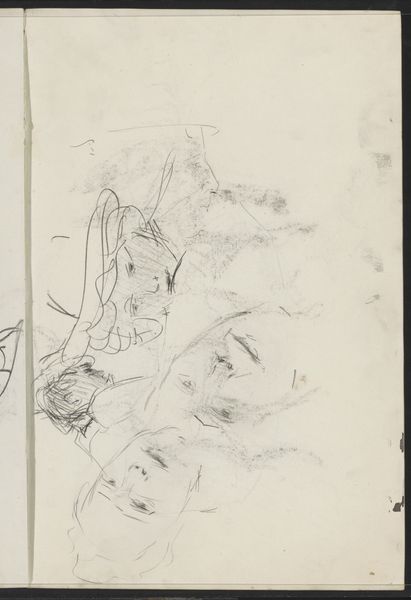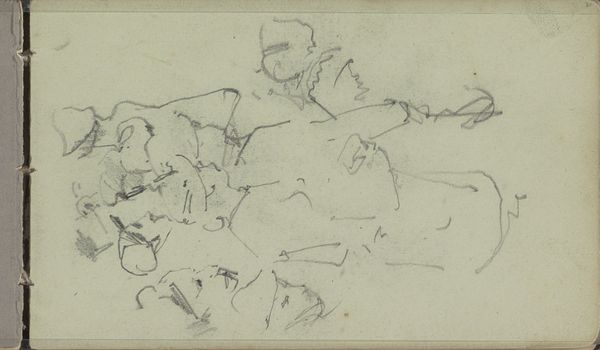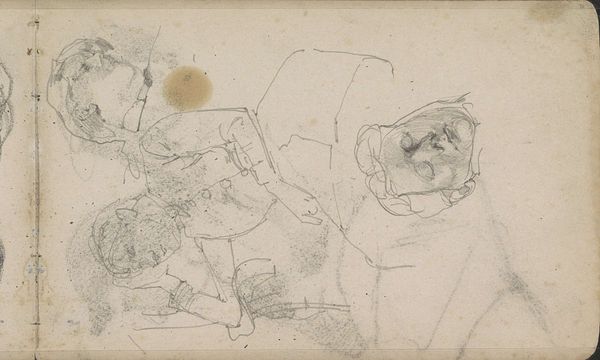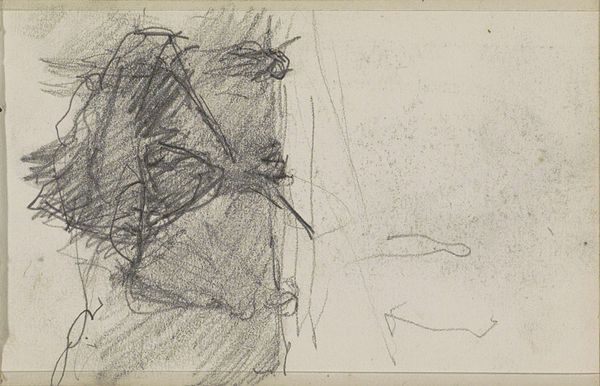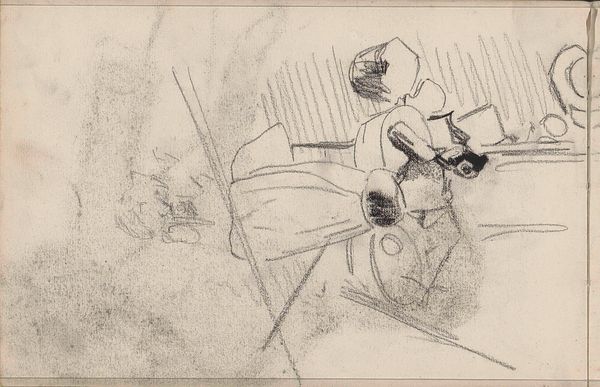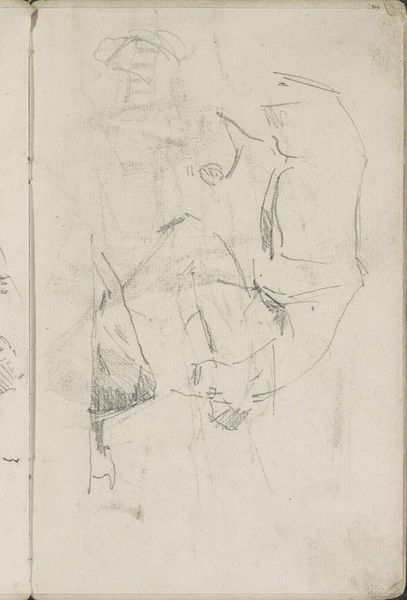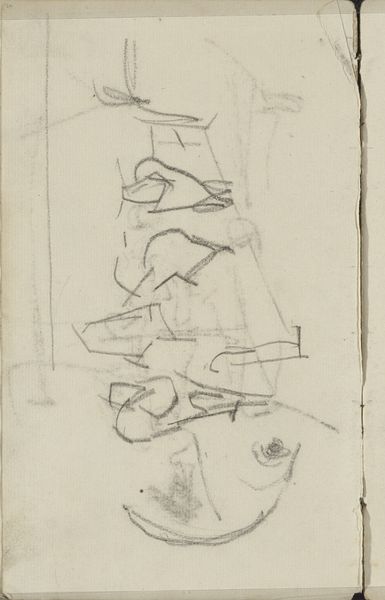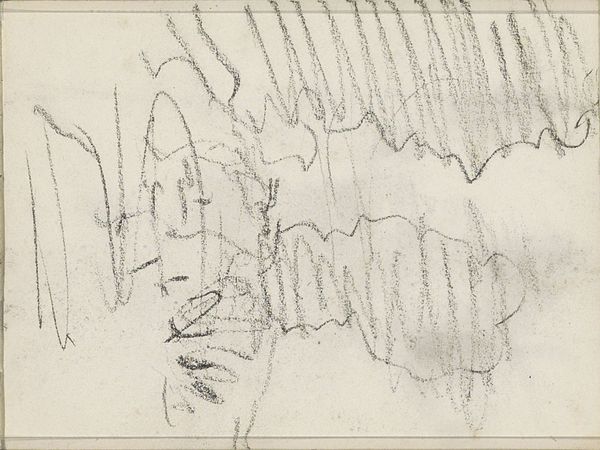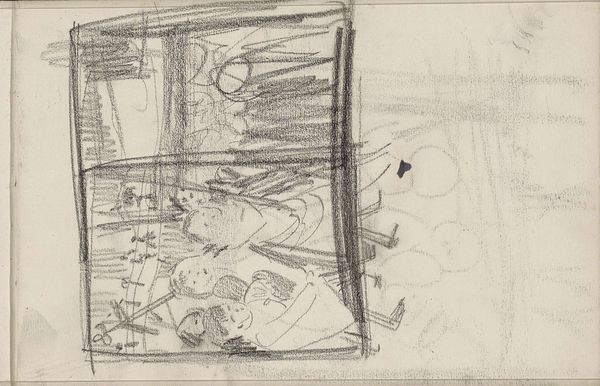
drawing, pencil
#
drawing
#
amateur sketch
#
toned paper
#
light pencil work
#
impressionism
#
sketch book
#
incomplete sketchy
#
figuration
#
personal sketchbook
#
sketchwork
#
pen-ink sketch
#
pencil
#
sketchbook drawing
#
sketchbook art
Copyright: Rijks Museum: Open Domain
Curator: Here we have "Groep figuren", or "Group of Figures," a pencil drawing by George Hendrik Breitner, dating from 1881 to 1883. Editor: My first impression is of something fleeting and incomplete, like a half-remembered dream sketched in the early morning. There’s a rawness that’s quite striking. Curator: It's definitely a sketch, likely from one of Breitner's sketchbooks. What's interesting to me is placing this type of quick study within the context of late 19th-century artistic practice. Breitner was moving towards a form of impressionism heavily influenced by urban life. These sketches capture that ephemeral quality. Editor: I agree. Seeing those roughly outlined figures evokes the transient nature of city life, the anonymous faces in a crowd. I’m thinking about how class might inform the subjects; there's something about their postures and the suggestion of hurried movement that speaks to the laboring classes in Amsterdam. Curator: Precisely. Breitner’s social circle placed him in proximity to socialist thinkers. While his work wasn’t overtly political, his unflinching portrayals of everyday life and ordinary people definitely reflected a shift in artistic focus, away from bourgeois portraiture and towards representing a broader spectrum of society. Editor: And I see it also in how he doesn’t seem to idealize his subjects. The roughness, the lack of refinement, almost feels deliberate, an act of resistance against academic tradition and its beautification of reality. There's an honesty here, an unvarnished look at humanity. Curator: Absolutely. And understanding that context helps us to view even a simple sketch like this one as part of a larger social and artistic movement. The Rijksmuseum, being a national institution, historically struggled to validate art showing a stark representation of daily life and commoners, it is worth mentioning the shifting institutional appreciation. Editor: So, even within its incompleteness, this small sketch becomes a powerful statement about representation and the democratizing of art, inviting the viewer to recognize the beauty and value in the uncelebrated aspects of human existence. It really gives pause to consider these ghostly figures, caught in a moment of time, just like us. Curator: Yes, viewing it with consideration to its historic placement reveals the political leanings of such artworks, as well as providing space for critical examination. Thank you.
Comments
No comments
Be the first to comment and join the conversation on the ultimate creative platform.
